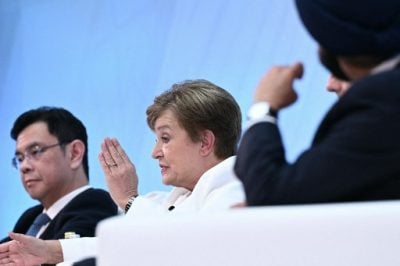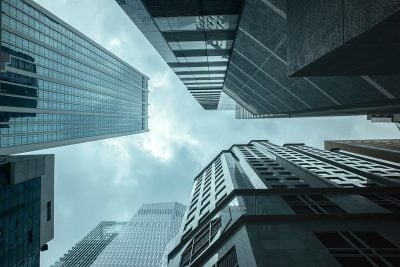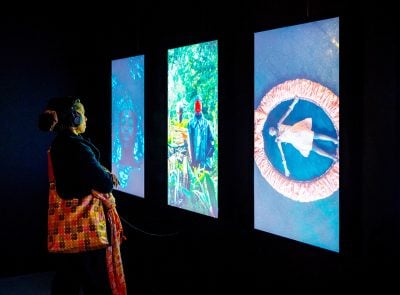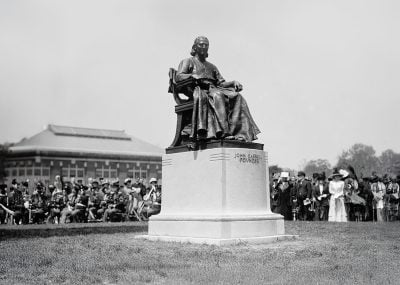Over the last dozen or so years, Equatorial Guinea has been been quietly but steadily following a plan that is transforming this wealthy Central African country from the severely underdeveloped state it was 20 years ago into what could turn out to be sub-Saharan Africa’s first successful transition into an industrialised middle-income nation by 2020.
Equatorial Guinea is Africa’s third largest oil producer, after Nigeria and Angola, and an important exporter of natural gas. With a small population located on the main island of Bioko, the smaller island Annobón, and Rio Muni on the mainland, it has sub-Saharan Africa’s highest per capita income. But it is also clearly very much a work in progress.
With its network of excellent metalled roads, its modern architecture in the capital Malabo, its deep ports and well-appointed airports, it is easy to forget that at independence in 1968 and for at least a decade after that, it was one of the least developed countries in Africa. It eked out a meagre living through the export of cocoa, coffee and timber, the proceeds of which mainly went to Spanish colonialists and their descendants. The majority lived hand-to-mouth practising a primitive form of agriculture and firmly shut out of the commercial life of the territory.
The years after independence were also marked by vicious political in-fighting in the scramble for a larger slice of the tiny economic pie. With the withdrawal of Spain and the climate of instability enveloping the country, Equatorial Guinea was neglected by the international community and almost sank into oblivion.
It was not until the current President, President Teodoro Obiang Nguema Mbasogo came into power in 1979, that a measure of political stability was established.
However, the new leader found himself in control of a ruined country – the cocoa and timber plantations had been virtually wiped out, there were no banks or educational institutions and the country did not have a tradeable currency. To all intents and purposes, it was bankrupt.
President Obiang established important partnerships with a number of countries – Spain, Morocco, France, China, Cuba and Nigeria but attempts to attract desperately needed investment and know-how came to nothing. The country lacked even the basics on which to start rebuilding – there was no professional class, no administrative infrastructure, no companies or services.
The first move to drag the country out of its malaise was the creation of two commercial banks and the publication of an investment code. But without a recognisable currency, it was an uphill struggle. In 1980, President Obiang visited then French President Valéry Giscard d’Estaing, who suggested that Equatorial Guinea join the CFA zone.
This would enable it to trade not only with France but also with its neighbouring African states. After protracted negotiations, the country was finally admitted to the CFA zone in 1985 and this allowed it to break out of the isolation it had found itself in as the only Spanish-speaking nation in the region.
In 1980, President Obiang Mbasogo formed a joint venture, GEPSA (Spanish Guinea Oil SA) with a Spanish prospector. Although GEPSA was provided with a virtual exploration monopoly for 10 years, it failed to discover any oil.
In 1990, a small US company, Walter International won the exploration rights in an offshore field called Alba. It almost immediately struck oil and first oil began to flow a year later. More fields were to come on stream later but this was the turning point in Equatorial Guinea’s fortunes.
Oil revenues, by no means copious initially, at least allowed the government to begin the massive task of building a viable economy. Progress was slow – many had fled the country during the turbulent times and only began trickling back; the lack of education meant that there were serious capacity deficiencies and most investment went into oil and gas leaving little with which to build infrastructure and put into place all the factors needed for a vibrant economy.
Although political stability had been established, there was sniping by opposition groups, which were often financed by foreign fortune-hunters.
This culminated in the failed attempt by a band of mercenaries, funded by dubious entrepreneurs including Mark Thatcher, son of the former and now late Prime Minister of Britain, Margaret Thatcher.
With oil revenues providing a steady income, Equatorial Guinea drew up its first national development plan in 1997.
Development steps up
In 2007, a more ambitious, longer-term plan was drawn up. This was to run to 2020 with the aim of diversifying from an oil and gas based economy to an industrial, emerging nation by 2020 – Vision 2020, or in Spanish, Plan Horizonte 2020.
The first item on the agenda was to construct a physical infrastructure, often from scratch. The crumbling, pot-holed roads were resurfaced and new ones were built to connect all parts of the country and also to provide access to neighbouring countries on the mainland. The ports were deepened and enlarged and an oil terminal and freeport were constructed. The Malabo International airport was modernised and other smaller airports were built.
New office and residential blocks went up in the cities and a programme of social housing was begun. Schools and dispensaries began to appear all over the country and the number of companies multiplied. As the per capita GDP began to rise, so did the number of shops, showrooms and other retail outlets.
The groundwork for providing electricity, clean water and sewage to all households in the country was laid.
Two major industrial projects, based on hydrocarbons, were set up. The first, completed in 2001, is Atlantic Methanol Production Company (Ampco) plant on Bioko and the second is the $1.4bn Punta Europa LNG plant which sells all its output to the UK’s BG Gas Marketing.
But with oil and gas vulnerable to sometimes-wild fluctuations in prices and the knowledge that hydrocarbons are finite, the country has set out a carefully thought-out industrialisation plan.

Above: President Teodoro Obiang Nguema Mbasogo
Industrialisation master plan
The industrialisation master plan, known as PEGI 2020, was launched in November 2011. While the Ministry of Mines, Industry and Energy is in overall charge of the plan, other ministries feed into it. The plan is in two phases: 2012–2016 and 2016–2020.
The aim of the plan is simple: to diversify the economy and to improve the quality of life of the people. Equatorial Guinea has realised that meaningful, sustainable development is only possible in a vibrant, multi-dimensional economy that is competitive and provides quality occupation for its citizens. It is also an acknowledgement that the country has so far not exploited its natural resources, apart from hydrocarbons and that it cannot continue to import virtually all its needs, including food.
The broad idea is to industrialise all its sectors: oil and energy; agriculture including agribusiness, forestry and livestock development; fisheries and aquaculture; tourism and financial services.
The Ministry of Mines, Industry and Energy has produced a detailed analysis of the potential for industrialisation including a frank discussion of the constraints and challenges that will have to be overcome.
It has also produced graphs showing the degree of gap between the current situation and the desired outcome and therefore the ease or difficulty inherent in applying the industrialisation process. The smallest gap is in the petrochemical industry, followed by construction and timber while the widest gap is in metallurgy and livestock development. Tourism, the analysis demonstrates, will also need a considerable amount of effort to attain the level desired.
Is industrialisation, for a small country with a small population, feasible, and can it be competitive in the regional market? On the surface, it might seen that it is a dream too far but the country’s planners point out that the country has sufficient resources to make this inevitable, as long as the plan is adhered to.
A petrochemical industry for example offers considerable scope for the production of industrial products such as refined petroleum, bio-ethanol, diesel, paints, asphalt, retreading of tyres, recycling of plastics and using waste products to generate energy. By-products from the industry can be used to set up a pharmaceutical industry producing generic drugs and other medication.
Fisheries is another area that is ripe for industrialisation. Currently, foreign trawlers take out most of the catch from the relatively rich fishing grounds around the country. Currently fish production is only around 4,000 tonnes but the potential is for 75,000 tonnes a year. Canning fish for export will be a logical consequence.
Hydrocarbon by-products can also be used in the manufacture of fertilisers, which will not only boost production within the country but could find ready export markets. In addition, there is ample opportunity to process palm oil, sugar, cocoa, cassava and can tomatoes and other fruit.
With construction continuing at a dizzying pace, there are ample opportunities to set up brickworks, iron and steel factories, furniture production, tiles and other roofing materials, cement production and others. With huge iron-ore output from nearby Sierra Leone, Liberia and Guinea, there seems to be no reason why a viable steel industry should not be both feasible and profitable.
Equatorial Guinea has some of the most beautiful beaches in the region but if it is to develop the sector’s full potential, it will have to draw up a tourism master plan and make the process of obtaining visas more streamlined if not only foreign tourists, but also investors and professionals are to be attracted. The country has an excellent and very modern conference centre which can be made more accessible to outsiders by easing entry requirements.
Equatorial Guinea’s competitive advantage lies in the fact that it is a major oil and gas producer and has a substantial revenue stream with which to enter into joint-venture partnerships with foreign investors. What it lacks is know-how and human resource capacity. The plan makes provision for this and suggests that it will be necessary to import foreign professionals at the start-up phase of industrialisation before locally trained professionals can be eased into the system.
Equatorial Guinea now finds itself in an ideal position to go full tilt into the industrialisation phase. The omens are good right now.
Want to continue reading? Subscribe today.
You've read all your free articles for this month! Subscribe now to enjoy full access to our content.
Digital Monthly
£8.00 / month
Receive full unlimited access to our articles, opinions, podcasts and more.
Digital Yearly
£70.00 / year
Our best value offer - save £26 and gain access to all of our digital content for an entire year!
 Sign in with Google
Sign in with Google 


